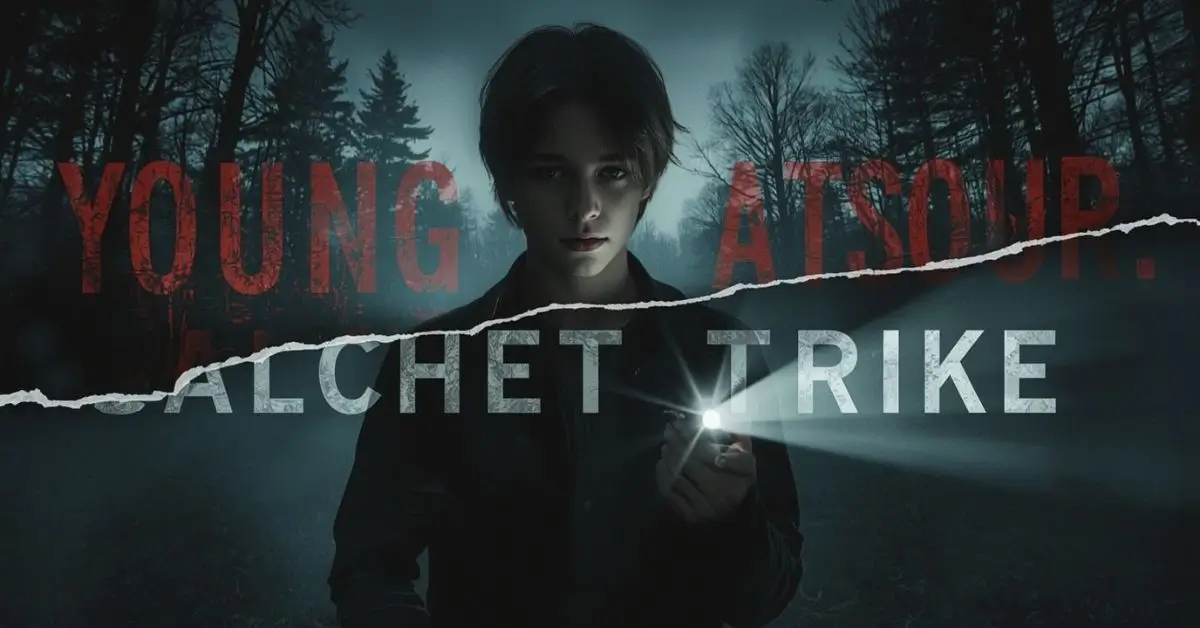ENTERTAINMENT
America’s First Zoo: Where Wildlife History Began

The Origins of the Philadelphia Zoo
America’s First Zoo In 1859, the Commonwealth of Pennsylvania chartered the Zoological Society of Philadelphia, but the Civil War postponed its opening until 1874 Inspired by European models like London Zoo, Dr. William Camac and his peers secured a scenic location on Fairmount Park’s rolling acres, centered around The Solitude mansion
Setting the Standard: Milestones in Zoological History
What set this institution apart from its earliest days were its pioneering approaches:
-
Scientific Breeding and Veterinary Care: Shortly after opening, the zoo welcomed captive-born red and white-tailed deer, sowing the seeds of conservation breeding In 1901, an on-site animal hospital, the world’s first of its kind, underscored its commitment to professional care .
-
Exotic Birth Victories: The first U.S.-born chimpanzee and orangutan arrived in 1928, reinforcing the zoo’s status in behavioral science . In later years, it would be the birthplace of the first North American-born echidna and captive cheetah.
-
Interactive Education: The zoo opened the United States’ first Children’s Zoo in 1938, emphasizing better visitor engagement and animal welfare
Celebrating 150 Years of Legacy
2024 marked a major milestone: the 150th anniversary of the zoo’s momentous opening . A grand celebration kicked off with more than 3,000 visitors entering on day one in 1874, growing to nearly 680,000 attendees during the 1876 Centennial Exposition Historic artifacts, commemorative band performances, special admission pricing, and even flashback events—like the era-appropriate $1.50 hotdogs—honored the institution’s vibrant history .
Modern Innovations and Conservation
The modern Philadelphia Zoo remains a trailblazer:
-
Zoo360 Trails: This first-of-its-kind mesh system allows animals to traverse above visitors, granting primates, big cats, and otters unprecedented freedom .
-
Rare Animal Conservation Center: A global leader in endangered species recovery, the Zoo focuses on Amur leopards, Sumatran orangutans, and Western lowland gorillas
-
State-of-the-art Exhibits: From innovative aviaries to rejuvenated habitats for reptiles, birds, and mammals, the facility blends historical charm with contemporary zoo design
Culture, Architecture, and Heritage
The zoo’s surroundings are enriched with historical and cultural significance:
-
Victorian Roots: The original wrought-iron gateway, stone fence, and carriage house remain testament to 19th-century Victorian architecture
-
Haunted Legacy: Stories of ghostly apparitions in The Solitude and other buildings give rise to a fascinating folklore that blends history with mystery
-
Iconic Media Appearance: The Carnivore House served as a backdrop in Rocky II, adding cinematic flair to its storied past .
These stories bring an added layer of interest and nostalgia for visiting families, historians, and pop culture fans alike.
Why It Still Matters
The Philadelphia Zoo remains a cornerstone of American zoological practice, reflecting its founding principles through:
-
Ongoing Research and Veterinary Sciences: Continuing its legacy in animal health and behavioral studies.
-
Environmental Education: Hosting outreach programs, student workshops, and interactive family events.
-
Global Conservation: Collaborating with international partners to support species beyond zoo walls.
These enduring commitments honor its heritage as the nation’s first zoo and affirm its evolving role in biodiversity preservation.
Frequently Asked Questions
Q: When did America’s first zoo’sopen?
The Philadelphia Zoo, founded by the Zoological Society of Philadelphia in 1859, officially opened on July 1, 1874. Civil War delays postponed its launch by fifteen years
Q: Why is the Philadelphia Zoo called the first zoo in the U.S.?
It holds this title because of the Society’s charter in 1859 and its dedication to scientific study—praised as the first “true zoo” in the country—even though Central Park and Lincoln Park menageries existed in smaller forms</span> .
Q: What were some of the first animals to arrive?
The early animal collection included marsupials like kangaroos and wombats from Australia and staple American wildlife such as buffalo, bears, deer, wolves, and foxes from domestic and Smithsonian sources
Q: What historical breakthroughs did the zoo achieve?
Pioneering efforts included the first zoo-based African big cat and primate births, the first on-site veterinary hospital (1901), and the nation’s inaugural Children’s Zoo (1938)
Q: Is the Philadelphia Zoo haunted?
Local legend suggests that The Solitude and other old structures house paranormal activity, with staff reporting sightings, music, and unexplained lights
Conclusion
From its visionary inception in 1859 to its milestone 150th-anniversary celebration, the Philadelphia Zoo has grown far beyond its historic Victorian beginnings. It has pioneered scientific animal care, influenced global conservation practices, and remains a cultural beacon in Philadelphia.
ENTERTAINMENT
How Emad Alashmli Impacts His Community

Every great story starts with humble beginnings, and the Emad Alashmli story is no different. Born and raised in Henderson, North Carolina, Emad grew up surrounded by diversity, hard work, and community values. From an early age, he showed a strong sense of curiosity and empathy—two qualities that would later define his approach to life and content creation.
According to people close to him, Emad was always the “listener”—the kind of person who paid attention to people’s stories, struggles, and dreams. That ability to understand human emotion became the foundation of his work as a digital creator and influencer. Before long, his name began to circulate locally—not because of marketing or paid ads, but because people genuinely connected with his message.
From Henderson NC to the Digital World
Emad Alashmli Henderson NC is not just a phrase—it represents the bridge between local roots and global reach. While many creators focus solely on online virality, Emad’s approach has always been grounded in where he comes from. Henderson, a city with a growing cultural and entrepreneurial scene, served as his training ground for leadership and resilience.
His online journey began organically. Like many creators, he started by sharing moments of everyday life—snippets that reflected authenticity rather than perfection. Slowly, those snippets turned into stories, and stories into meaningful conversations. Today, Emad Alashmli Henderson NC stands as a symbol of small-town creativity meeting big-world vision.
Emad Alashmli: A Social Media Influencer with Purpose
In the crowded world of influencers, standing out is not easy. But Emad Alashmli social media influencer isn’t just a title—it’s a calling. He doesn’t chase trends for the sake of relevance; instead, he focuses on creating value. His followers often describe his content as “refreshing,” “real,” and “motivating.”
On platforms like Instagram and YouTube, Emad emphasizes community involvement and positivity. He often speaks about mental well-being, personal growth, and the importance of giving back. Unlike many influencers who portray an idealized version of life, Emad shows the unfiltered side—the challenges, the setbacks, and the small victories that make success meaningful.
In one of his posts, he wrote:
“You don’t need to have a million followers to make a difference. You just need to care enough to show up.”
That quote encapsulates his digital philosophy perfectly. It’s not about reach—it’s about relevance.
The Depth Behind the Emad Alashmli Biography
If you read any Emad Alashmli biography, you’ll find more than just achievements—it’s a narrative of self-discovery. His early life in North Carolina, his family’s support, and his determination to build something authentic have all shaped who he is today.
In his own words, Emad once said that he started sharing online because he “wanted people to feel seen.” That goal has guided his projects and collaborations ever since. From community-driven initiatives in Henderson NC to creative campaigns that highlight underrepresented voices, his journey is deeply intertwined with empathy.
Beyond the camera and hashtags, Emad is also known for his involvement in local events. He mentors young creators, supports small businesses, and encourages people to use digital media as a force for good. It’s this balance between online creativity and offline impact that makes his story so relatable.
Building the Emad Alashmli Instagram Profile
The Emad Alashmli Instagram profile isn’t just a collection of photos—it’s a carefully crafted narrative of motivation and identity. Scrolling through his feed, you’ll notice themes of gratitude, community, and purpose. Each post feels intentional, offering something meaningful rather than just visual appeal.
His engagement rates are impressively high, reflecting genuine audience interaction. Followers frequently comment not just with emojis but with full sentences, expressing how a post inspired them or shifted their perspective. That level of engagement indicates trust—and in the digital age, trust is the ultimate metric of influence.
The Rise of the Emad Alashmli YouTube Channel
While Instagram gave him visibility, YouTube became his storytelling platform. The Emad Alashmli YouTube channel combines visual creativity with thoughtful commentary. Topics range from personal growth and entrepreneurship to life lessons from everyday experiences.
His vlogs often include moments of reflection—walking through the streets of Henderson NC, meeting locals, and discussing how technology can connect rather than divide communities. Viewers describe his tone as conversational, almost as if he’s speaking directly to them. This is part of his charm—authentic connection over curated content.
Emad Alashmli and His Role in Community Involvement
A defining aspect of his journey is Emad Alashmli community involvement. He doesn’t just talk about change—he helps create it. Over the years, Emad has participated in local drives, youth mentorship programs, and digital literacy workshops in Henderson community centers.
His focus is often on empowering young people who feel limited by their environment. He emphasizes that creativity isn’t bound by geography—you can inspire and lead from anywhere. Through these efforts, Emad has helped cultivate a culture of motivation and local pride.
One community member once remarked,
“Emad makes us believe that Henderson can shine on the map because of people like him.”
That’s a powerful testament to his real-world influence.
The Digital Creator Perspective: Passion with Purpose
As a digital creator, Emad blends artistry and authenticity. His content strategy is built around three pillars—storytelling, service, and sincerity. In a time when social feeds are filled with short-lived trends, he prioritizes messages that endure.
He’s also transparent about the realities of content creation—burnout, algorithm changes, and the constant pressure to stay visible. By opening up about these challenges, he humanizes the influencer experience and creates a safe space for honest dialogue.
In 2025, his work reflects a broader shift in the influencer economy: audiences now crave realness over perfection. And Emad delivers that in every frame.
Leadership and Local Impact in Henderson
When it comes to Emad Alashmli local leadership, his influence extends well beyond digital screens. He’s known for organizing events that bring together young creators, local entrepreneurs, and community members. His message is simple but powerful: “Creativity can change your town.”
By collaborating with local schools and nonprofits, Emad has shown that digital innovation can strengthen real-world bonds. Whether it’s raising awareness for local causes or highlighting small-town success stories, his leadership embodies the spirit of Henderson—a blend of heart, hustle, and hope.
Lessons from the Emad Alashmli Story
So, what can we learn from the Emad Alashmli story? First, that success doesn’t require fame—it requires focus. Second, that influence means more when it’s used responsibly. And finally, that staying true to your roots can be your greatest strength in a world chasing trends.
Emad’s story reminds us that being a digital creator is about more than aesthetics—it’s about meaning. Every post, every project, every community act contributes to a larger mission of inspiring others to believe in themselves and their potential.
FAQ’s
Emad Alashmli is a digital creator and community leader from Henderson, NC, known for his authentic content, positive messaging, and local involvement.
He shares motivational content, lifestyle insights, and community initiatives. His Instagram profile and YouTube channel highlight creativity, empathy, and digital leadership.
Emad actively supports local youth programs, small business promotions, and community development efforts through workshops and social campaigns.
His mix of authenticity, creativity, and purpose-driven storytelling resonates with modern audiences seeking genuine connection over superficial content.
Conclusion
Emad Alashmli represents a new wave of creators—those who balance digital influence with real-world impact. From his humble beginnings in Henderson NC to his growing online presence, his journey reflects the best of what modern leadership can be: compassionate, creative, and community-centered.
ENTERTAINMENT
What Is Doodflix and Why Everyone’s Talking About It

The simplest way to describe it: a video service claiming access to movies, series, and downloads without paying a subscription. Some articles note that Doodflix functions more like a network of sites and mirror domains rather than a single official company.
In one user forum conversation someone stated:
“Finally found something not behind a pay-wall — but had to install an unknown APK to use Doodflix.”
That’s a red flag worth noting.
Although Doodflix markets itself as a “free streaming platform” with lots of content and no signup, several sources raise doubts about its legality, safety, and longevity.
Doodflix Free Movies App — What You’re Really Getting
What fans claim at first glance
- Free access to full movies and TV shows, often including recent titles.
- No (or minimal) subscription fees; some say no signup required.
- Ability to download shows for offline viewing or stream via APK on Android devices.
The deeper reality
- The app often isn’t available in official stores (Google Play, Apple App Store) — requiring users to sideload an APK or access mirror sites.
- Many pieces of content may not hold proper licensing or distribution rights. This puts you at risk of legal exposure or service shut-downs.
- The “free” model can hide ads, pop-ups, redirect links, or worse — malware or data-hijacking scripts.
Bottom line: what looks like a free movies app might cost far more in risk than you expect.
Doodflix Animation Library & Content Catalogue
One point some sources highlight: Doodflix markets itself as having a broad catalogue — including niche or lesser-known content, independent films, and animated series.
What’s in the catalogue
- Indie films, documentaries, foreign-language movies not always found on mainstream services.
- Anime and animation-focused titles, some user-generated content or less-licensed works.
- Live streaming events, DIY video content, and educational channels according to some reviews.
What to question
- Are the titles listed officially licensed? The model described in some Android-centric sites suggests “uploaders upload, embed, then stream” which is indicative of potential copyright breach.
- Does the library update reliably, or is it constantly shifting domains and links? Users report instability in links and domain changes.
Doodflix Download APK: How It Works & Why It’s Risky
For many users, the first step is downloading the Doodflix APK. Indeed many sites advertise “Doodflix download APK free” versions.
Pros that tempt users
- Install on Android devices quickly.
- Access outside of paid subscriptions.
- HTML5 or app interface made for mobile use.
Cons you must know
- Downloading from an unofficial APK opens the door to malware, ransomware, or adware bundles. According to security reviews, Doodflix mirrors often contain unencrypted or unreliable code.
- Installation often requires bypassing Android’s standard security (“Allow unknown apps”), which reduces your device’s protection.
- Since content rights are unclear, you could lose access or face take-down without warning.
- Because it may lack standard browser or store protections, your data, payment information or device could be exposed.
In short: Doodflix download APK might feel appealing for free content — but it’s loaded with risk.
Doodflix vs Netflix: How They Compare
Comparing Doodflix vs Netflix highlights the trade-offs between low-cost convenience and reliability/safety.
| Feature | Netflix (Mainstream) | Doodflix (Unofficial) |
|---|---|---|
| Licensing & Rights | Fully licensed, global distribution | Often unlicensed, unclear legal status |
| Subscription Model | Paid, defined cost | Free (or hidden cost) |
| App Availability | Official store listings for Android/iOS | Often sideloaded APKs or mirror websites |
| Content Catalogue | Known titles, Originals, consistent releases | Mixed catalogue, shifting links |
| Security & Ads | Secure DRM, minimal ads on paid plans | Ad-heavy, potential malware risk |
| Device & Support | Wide device support, reliable UX | Varies by domain, limited support |
While Netflix offers certainty and legitimacy, Doodflix alternative streaming may offer “more” content for free — but at much higher risk.
Doodflix Streaming Platform — Risks & Considerations
Security risks of using Doodflix
Tech/security analysts highlight several risk vectors tied to the platform. Here’s what they found in recent reports:
- Sites with Doodflix branding frequently operate via mirror domains and servers outside normal regulation, exposing users to untraceable infrastructure.
- Data is often transmitted without encryption; many domains lack valid SSL certificates.
- Advertising networks embedded in these sites can lead to phishing, crypto-mining scripts, or ransomware.
- Because the service claims free access to copyrighted content, using it may expose users to copyright enforcement actions or ISP notifications.
Legal and ethical considerations
Using services that distribute content without proper licensing may place users in violation of local copyright law. Some countries hold viewers liable for accessing unlicensed streams.
Usability-and-quality trade-offs
Even if you ignore legality and security, using a platform like this could mean: poor streaming quality, broken links, sudden domain changes, and no reliable customer support. These aren’t just minor annoyances — they may reduce your enjoyment significantly.
Doodflix Subscription Plan — What You Should Know
Some promotional posts suggest Doodflix subscription plan options. For example, one review describes: free tier (with limited access), standard plan for ad-free streaming, premium bundle with 4K and downloads.
However:
- It’s not clear if these plans are official, legally licensed, or simply marketing tactics to monetize clicks or ad revenue.
- Without official app store listing, payments may not be protected, refunds may not be possible, and services may vanish without notice.
- If you pay for an unofficial plan, you carry all the risk that comes with unregulated services.
Who Can Doodflix Really Serve?
Doodflix for students & budget viewers
If you’re a student or budget-based viewer looking for “free movies no subscription,” Doodflix may seem tempting. It indeed presents doodflix alternative streaming with broad promise. But the hidden risks could outweigh the savings — device-security, data theft, and legality all loom.
Doodflix for professionals or heavy users
If you heavily use streaming for work, film research, or content review, you need a platform that’s reliable, legal, and secure. In that realm, Doodflix falls short — major drawbacks include uncertain licensing, variable UX, and high risk.
Best Practices If You’re Considering Doodflix
- Check the domain carefully — official branding often gets copied. Use known-good sources.
- Use device protection — ensure you have a reputable antivirus, firewall, and avoid side-loading APKs whenever possible.
- Use a VPN when streaming — especially if you’re outside your home region or worried about geo-blocking or regulation.
- Limit personal info — avoid giving payment or sensitive info unless you verify the platform’s legitimacy.
- Have a legitimate alternative ready — if your platform vanishes or is blocked, you’ll want a backup.
- Stay informed about local laws — streaming/copyright law varies significantly by country.
FAQs
Legality depends on whether the films/shows are licensed for distribution in your region. Many users report that Doodflix content catalogue includes works without proper licensing — which means use may violate copyright laws locally.
You can download from APK sites, but doing so carries increased risk — doodflix download apk files may contain malware, unverified code, or ads that compromise security. Security audits have flagged platforms similar to Doodflix for these issues.
Final Thoughts
In a streaming world packed with fees and subscriptions, Doodflix stands out as a tempting alternative. But when you dig deeper into its security risks, legal uncertainties, and variable user experience, caution is advised.
ENTERTAINMENT
Top 10 Best YA Thrillers That Keep You Guessing

Best ya thrillers already demand tension, pacing, and stakes. But in young adult fiction, there’s an extra layer: identity, vulnerability, firsts and lasts, emotional turmoil. The protagonists are often discovering who they are—so the external mystery mirrors internal growth.
When done well, a coming-of-age thriller leaves you changed. And that’s one reason best young adult mystery books tend to linger: they give you both thrills and heart.
A Reddit user once said:
“The Naturals by Jennifer Lynn Barnes blew my mind. I stayed up all night trying to piece together every clue.”
That’s the kind of impact we’re going for here.
What Makes a YA Thriller “Best” in 2025?
Before we list titles, let’s talk about criteria. Because “best” is subjective. In 2025, a top-tier YA thriller should:
- Balance plot and character: The mystery can’t overshadow emotional arcs.
- Be timely, but timeless: Themes that resonate now (e.g. social media, identity, inequality), yet still hold up years later.
- Offer sub-genre variety: Some readers want YA psychological thrillers, others prefer dystopian YA thrillers, YA detective fiction, or YA crime thrillers.
- Feel fresh, avoid clichés: Avoid overused tropes unless they’re subverted.
- Be well-edited and accessible: Clean prose, compelling voice, and readability matter for YA audiences.
With that in mind, let’s walk through subgenres, standout titles, real-life examples, and then FAQs.
Top Subgenres in YA Thriller Fiction
Below, we explore what each subgenre brings, plus notable titles you should not miss (especially in new YA thrillers 2025).
YA Mystery Novels & Teen Mystery and Suspense Series
These lean into puzzles, hidden clues, secrets, and investigations. The goal? To make you as invested in unraveling as the protagonist.
- A Good Girl’s Guide to Murder (Holly Jackson) is a foundational read in this space. The clever plotting, podcast-like format, and twisty reveals set a high bar in YA mystery.
- The Naturals (Jennifer Lynn Barnes) mixes crime-solving with supernatural-ish gifts—perfect if you like detective vibes plus teenage stakes.
In 2025, the Listopia Goodreads list shows This Is Where We Die, Now She’s Dead, Twin Tides, Difficult Girls, Boys with Sharp Teeth as highly anticipated in YA mystery and thriller circles.
Also see New YA Thriller and Horror picks like Death in the Cards, Kill Creatures, Difficult Girls.
Teen Suspense Books & Best Young Adult Suspense Novels
Suspense books often slow burn tension, sometimes with a creeping sense of dread rather than overt violence.
- Nothing Bad Happens Here by Rachel Ekstrom Courage: a summer that should’ve been carefree turns sinister.
- Wander in the Dark by Jumata Emill: a story of secrets, class divides, and danger beneath the surface.
These are not pure mystery games; they’re built on relationships, suspicion, psychological tension, and small reveals that accumulate.
YA Psychological Thrillers
This subgenre emphasizes the internal world—unreliable narrators, gaslighting, mental fragility, secrets you can’t trust being told.
If you like slow-burn tension, this is your lane.
- Sadie by Courtney Summers is a masterclass in alternating voices and obsession.
- Broken Things by Lauren Oliver merges memory, betrayal, and secrets between friends.
- Though not YA, Beautiful Ugly (Alice Feeney, 2025) is a great example of psychological suspense with mirroring and doubles.
When reading YA psychological thrillers, watch out for triggering content (mental health, abuse). It’s vital that books treat sensitive topics carefully.
Dystopian YA Thrillers
These combine speculative world-building with high stakes, rebellion, and the constant pulse of danger.
While fewer dystopian thrillers are launching now compared to earlier YA booms, you’ll still see echoes of this style in stories with oppressive regimes, surveillance, or biological threats.
YA Detective Fiction & YA Crime Thrillers
These skew more toward classic detective work or criminal underworlds. They often include forensics, police procedure, or crime syndicates.
- When We Go Missing by April Henry: A teen photographer finds a memory chip with images of girls who went missing. She steps into investigative territory.
- A Beautiful and Terrible Murder by Claire Andrews: a YA crime thriller focusing on siblings, secrets, and blurred motivations.
Often these stories interweave with other genres (mystery, psychological) since pure procedural YA is rare.
Standout & Anticipated Titles in 2025
Here are some of the new YA thrillers 2025 and recent arrivals worth your radar:
| Title | Why It’s Worth Reading | Subgenre Tag |
|---|---|---|
| Death in the Cards by Mia P. Manansala | A tarot-reading teen’s client vanishes; she uses sleuthing + intuition to solve it. | Teen suspense / mystery |
| Kill Creatures by Rory Power | A dark, twisting story of revenge and hidden guilt. | Psychological thriller |
| Difficult Girls by Veronica Bane | A reinvention gone wrong; disappearance, secrets, and betrayal. | YA thriller / mystery |
| When We Go Missing by April Henry | Combines photography, missing girls, personal stakes. | YA detective / crime |
| The Meadowbrook Murders by Jessica Goodman | One of the most anticipated YA mystery/thriller titles. | Mystery / suspense |
| No Place Left to Hide by Megan Lally | A twisty thriller of secrets and danger. | Suspense / psychological |
These books show how authors are pushing the genre forward—tighter plots, more emotional stakes, subversion of tropes.
What to Watch Out For (Risks & Caveats)
Even the best YA thrillers can misstep. As a reader (or content curator), here are potential red flags to watch for:
- Trigger overload: Many YA thrillers address trauma, self-harm, abuse, etc. If a book broaches these, it should handle them with nuance and give content warnings.
- Plot convenience: Too many “coincidences” or hidden reveals that feel unfair can undercut immersion.
- Unclear stakes: If you can’t tell what’s at risk—or why you should care—then tension won’t stick.
- Character fatigue: If a protagonist is just one note (e.g. just “traumatized”) without depth, the emotional connection fails.
- Cliché tropes: Love triangles, overly mean side characters, or villains who monologue. These can still work if subverted—but use them carefully.
How to Choose a YA Thriller for You
Here’s a mini decision tree to match your mood to a subgenre:
- Want puzzles & clues? → Go YA mystery / detective fiction
- Prefer tension and unease over big reveals? → Try teen suspense
- Enjoy internal conflict and unreliable perspectives? → Pick YA psychological thrillers
- Love dystopian settings + danger? → Search for dystopian YA thrillers
- Crave underworlds, crime syndicates, or gritty themes? → Try YA crime thrillers
Also, read sample chapters, check warnings, read reviews from other teens or bloggers. A book that resonates emotionally will always outshine a more “clever” one.
Real-Life Reading Vibe: A Tweet-Sized Review
I saw this on a bookstagram post last week:
“I finished Kill Creatures in one sitting—I felt the panic in my chest, the betrayal, the twist I didn’t see coming. YA thrillers are everything right now.”
When readers respond like that? You know the genre is doing something right.
FAQ’s
Some of the best YA thrillers in 2025 include Death in the Cards by Mia P. Manansala, Kill Creatures by Rory Power, and A Good Girl’s Guide to Murder by Holly Jackson. Popular YA thriller authors such as Jennifer Lynn Barnes and Courtney Summers are known for crafting gripping mysteries that blend suspense, emotion, and strong character arcs.
Most YA thrillers are written for readers aged 13 and up, but content can vary. Some novels touch on darker themes like violence, trauma, or mental health. Always check age ratings and content notes before recommending a book to younger teens.
YA thrillers focus on younger protagonists facing identity, trust, and coming-of-age challenges. They often feature school settings, friendships, and first love—while maintaining the suspense and tension of traditional thrillers. The pacing is usually fast, and emotional stakes are high.
Readers can explore new releases and upcoming titles on platforms like Goodreads, Barnes & Noble, and BookTok recommendations. Lists of the best YA thrillers 2025 are also updated regularly on Book Riot, Novel Suspects, and Penguin Teen.
Final Thoughts
The world of best YA thrillers is richer and more diverse than ever—whether you’re after unpredictable plot twists, emotional catharsis, or gripping suspense. In 2025, authors are pushing boundaries: combining subgenres, tackling deeper social issues, and crafting voices that feel fresh.
-

 BLOG6 months ago
BLOG6 months agoBerniece Julien: The Quiet Power Behind the Spotlight
-

 BLOG6 months ago
BLOG6 months agoCineby App (2025): Features, Download & Fixes Guide
-

 ENTERTAINMENT6 months ago
ENTERTAINMENT6 months agoErome Uncovered: A Closer Look at the NSFW Content Platform
-

 EDUCATION6 months ago
EDUCATION6 months ago42°C to °F – Real Impact of Extreme Heat
-

 ENTERTAINMENT6 months ago
ENTERTAINMENT6 months agoScoutedToday: Discovering Tomorrow’s Talent Today
-

 TECH6 months ago
TECH6 months agoHow to Fix ‘Fatal glibc error: CPU Does Not Support x86‑64‑v2’ on Legacy Hardware
-

 TECH6 months ago
TECH6 months agoCaricatronchi: Redefining Digital Caricature
-

 ENTERTAINMENT6 months ago
ENTERTAINMENT6 months agoMangaFire Explored: Your Gateway to Free Manga Reading


